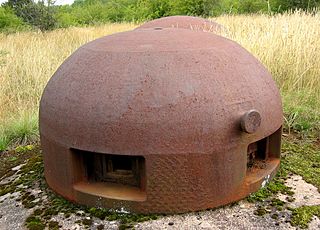
The GFM cloche was one of the most common defensive armaments on the Maginot Line. A cloche (bell) was a fixed and non-retractable firing position made of a thick iron casting which shielded its occupant. By comparison, turrets could be rotated and sometimes lowered so that only the top shell was exposed.
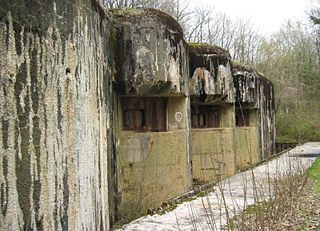
Ouvrage Latiremont is a gros ouvrage of the Maginot Line, located in the Fortified Sector of the Crusnes, sub-sector of Arrancy. It lies between the gros ouvrage Fermont and the petit ouvrage Mauvais Bois, facing Belgium. The village of Doncourt-Cités is nearby. Latiremont was active in 1939-1940, coming under direct attack in late June 1940. It surrendered to German forces on 27 June. After renovations during the Cold War, it was abandoned.

The JM cloche is an element of the Maginot Line. It is a non-retractable non-rotating cupola of steel alloy like GFM cloches, but are armed with twin heavy machine guns, as opposed to the lighter automatic rifles associated with the GFM. There are 179 JM cloches on the Maginot Line.

Ouvrage Hobling is a lesser work of the Maginot Line. Located in the Fortified Sector of Boulay, the ouvrage consists of two infantry blocks and two observation blocks, and is located between gros ouvrage Michelsberg and petit ouvrage Bousse, facing Germany. It has been stripped of metals and abandoned.
Ouvrage Bovenberg is a lesser work of the Maginot Line. Located in the Fortified Sector of Boulay, the ouvrage is located between petits ouvrages Berenbach and Denting, facing Germany. It consists of two infantry blocks and two artillery blocks.

Ouvrage Coume Annexe Sud is a lesser work of the Maginot Line. Located in the Fortified Sector of Boulay, the ouvrage consists of two infantry blocks, one artillery block and one observation block, and is located between petits ouvrages Coume and Mottemberg, facing Germany.
Ouvrage Mottenberg is a lesser work of the Maginot Line. Part of the Fortified Sector of Boulay, the ouvrage consists of one entrance block and two infantry blocks, and is located between petits ouvrages Coume Annexe Sud and Kerfent, facing Germany.

Ouvrage Kerfent is a lesser work of the Maginot Line. Located in the Fortified Sector of Faulquemont, the ouvrage consists of three infantry blocks and an observation block, and is located between petits ouvrages Mottemberg and Bambesch, facing Germany. During the Battle of France, Kerfent was attacked by German forces, who captured the position from the rear after a short assault with artillery support. The combat blocks were heavily damaged. During the Cold War, limited repairs were made to allow the underground facilities to be occupied. Between 1958 and 1961 the site was used by the Royal Canadian Air Force as a microwave communications relay station. In the 1970s the ouvrage was sold to the commune of Zimming. The ouvrage is now flooded.
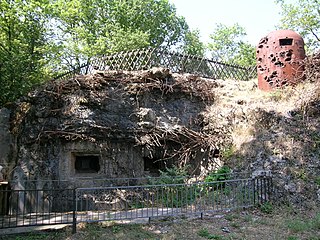
Ouvrage Bambesch is a lesser work of the Maginot Line. Located in the Fortified Sector of Faulquemont, the ouvrage consists of three infantry blocks, and is located between petits ouvrages Kerfent and Einseling, facing Germany. Completed in 1932, it is located in the Bois de Bambesch. On 20 June 1940 during the Battle of France, Bambesch was attacked by German forces, whose artillery battered the position, which could not be effectively supported by its neighbors, into surrender. Since 1973, Bambesch has been operated as a museum and is open to the public.
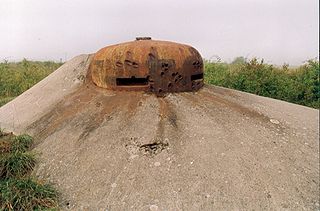
Ouvrage Laudrefang is a lesser work of the Maginot Line. Located in the Fortified Sector of Faulquemont, the ouvrage consists of one infantry block, and is located between petits ouvrages Einseling and Teting, facing Germany. Laudrefang was originally planned as a gros ouvrage. With a heavy armament for a petit ouvrage it successfully defended its neighbors against German attack during the Battle of France. Laudrefang is abandoned and flooded, and was heavily damaged by German bombardment in 1940.

Ouvrage Téting is a lesser work of the Maginot Line. Located in the Fortified Sector of Faulquemont, the ouvrage consists of one infantry block and two observation blocks, and is located facing Germany between petits ouvrages Laudrefang and the Saar valley, which was to be inundated in times of emergency. With artillery support from its neighbor Laudrefang, Téting held out against German bombardment during the Battle of France in 1940. It is now abandoned.
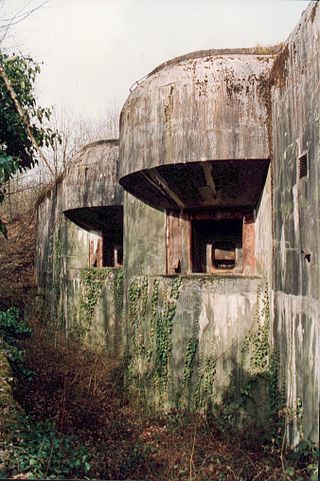
Ouvrage Billig, a gros ouvrage or large fortification of the Maginot Line, was located in the Fortified Sector of Thionville, Moselle in northern France. It is located between the gros ouvrages Metrich and Hackenberg, facing Germany. It saw relatively little action during World War II and after a period of reserve duty in the 1950s, was abandoned in the 1970s.

Ouvrage Métrich located in the village of Kœnigsmacker in Moselle, comprises part of the Elzange portion of the Fortified Sector of Thionville of the Maginot Line. A gros ouvrage, it is the third largest of the Line, after Hackenberg and Hochwald. It lies between petit ouvrage Sentzich and gros ouvrage Billig, facing Germany. Located to the east of the Moselle, it cooperated with Ouvrage Galgenberg to control the river valley.
Ouvrage Bréhain is part of the Fortified Sector of the Crusnes of the Maginot Line, located near the community of Bréhain-la-Ville in the Meurthe-et-Moselle department of France. Bréhain is flanked by petits ouvrages Mauvais Bois and Aumetz. The gros ouvrage was equipped with long-range artillery, and faced the border with Luxembourg. It saw no major action in either the Battle of France in 1940 or the Lorraine Campaign of 1944. While not open to public visitation, it has been secured and is in relatively good condition when compared to other abandoned Maginot positions. A flanking casemate has been restored and may be visited.

The VDP cloche was an element of the Maginot Line fortifications. A cloche (bell) was a fixed and non-retractable firing position made of a thick iron casting which shielded its occupant. By comparison, turrets could be rotated and sometimes lowered so that only the top shell was exposed. VDP cloches were used for observation of the surrounding area for artillery direction. VDP is an acronym for Vision Directe et Périscopique. By comparison with the GFM cloche, the VDP cloche had narrower ports and was consequently lower in profile.
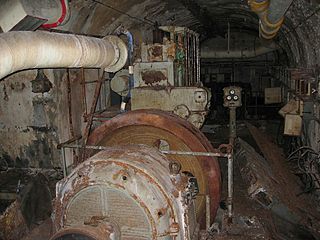
Ouvrage Soetrich is a gros ouvrage of the Maginot Line in north-eastern France. Soetrich is located between petits ouvrages Immerhof and Bois Karre, facing the France-Luxembourg border near the town of Hettange-Grande, part of the Fortified Sector of Thionville. Compared with other gros ouvrages, Soetrich is compact in arrangement, with the entries and underground ammunition magazines and barracks in close proximity to the combat blocks, accessed through underground galleries at an average depth of 30 metres (98 ft). Its primary purpose was to cover the main road to Luxembourg, just to the west. Along with its neighbours, Ouvrage Rochonvillers and Ouvrage Molvange, Soetrich was used during the Cold War as a secure command centre for NATO forces.

Ouvrage Galgenberg forms a portion of the Fortified Sector of Thionville of the Maginot Line. It is situated in the Cattenom Forest, near the gros ouvrage Kobenbusch and petit ouvrage Oberheid. The ouvrage was tasked with controlling the Moselle Valley and as such was called the "Guardian of the Moselle." Galgenberg did not see significant action in 1940 or 1944. After a period of reserve duty in the 1950s and 1960s, it was deactivated. It is now a museum.
Ouvrage Eth is an isolated petit ouvrage of the Maginot Line, built as part of the "New Fronts" program to address shortcomings in the Line's coverage of the border with Belgium. It is located between the villages of Eth and Wargnies-le-Grand, in Nord département. Eth is the sole Maginot fortification in the Fortified Sector of the Escaut, which primarily consisted of individual casemates, blockhouses and the improved 19th-century Fort de Maulde. During the Battle of France the ouvrage resisted artillery attack for four days before the garrison evacuated through a drain to a neighboring casemate.
Ouvrage Vélosnes is a gros ouvrage of the Maginot Line, located in the Fortified Sector of Montmédy between the towns of Othe and Vélosnes, facing Belgium. It possesses four combat blocks and one entrance block. It is located to the east of petit ouvrage Thonnelle. The position was sabotaged and abandoned by French forces that were ordered to retreat from the exposed position in June 1940 during the Battle of France. The ouvrage is abandoned and is administered as a nature preserve.

Ouvrage Chesnois, also known as Ouvrage Chênois, is a gros ouvrage of the Maginot Line, located in the Fortified Sector of Montmédy, facing Belgium. The ouvrage lies between the towns of Montlibert and Thonne-le-Thil. It possesses six combat blocks. It is located between gros ouvrage Thonnelle and petit ouvrage La Ferté. The position was sabotaged and abandoned by French forces that were ordered to retreat from the exposed position in June 1940 during the Battle of France. The ouvrage is now abandoned and sealed.















